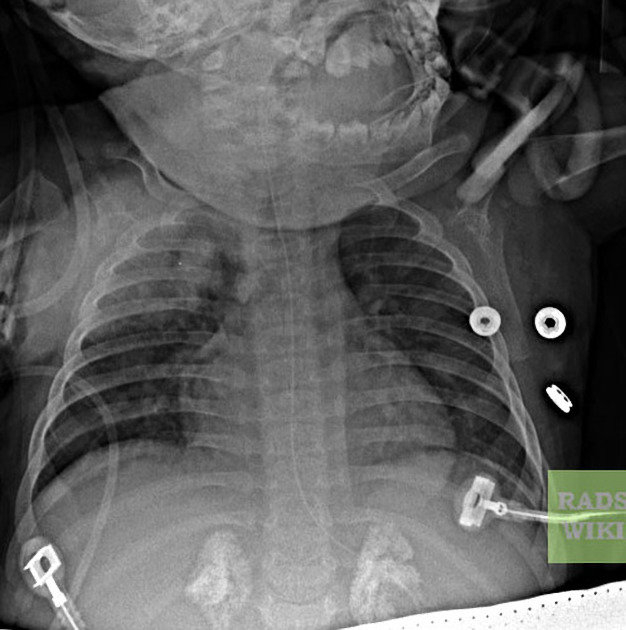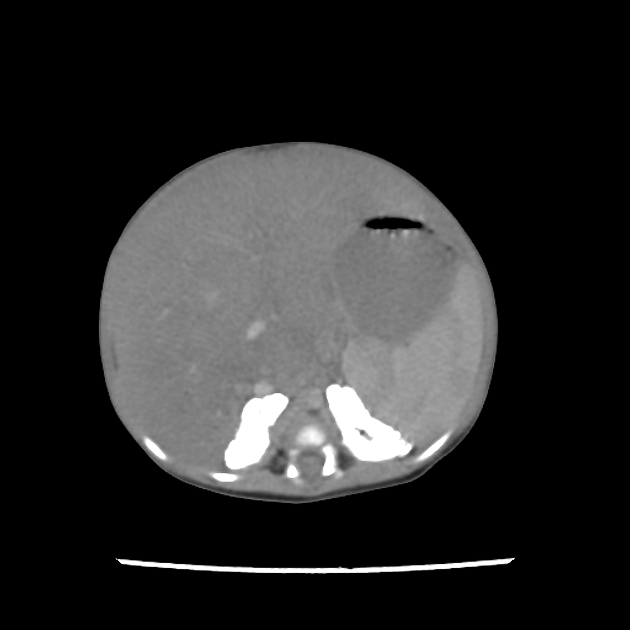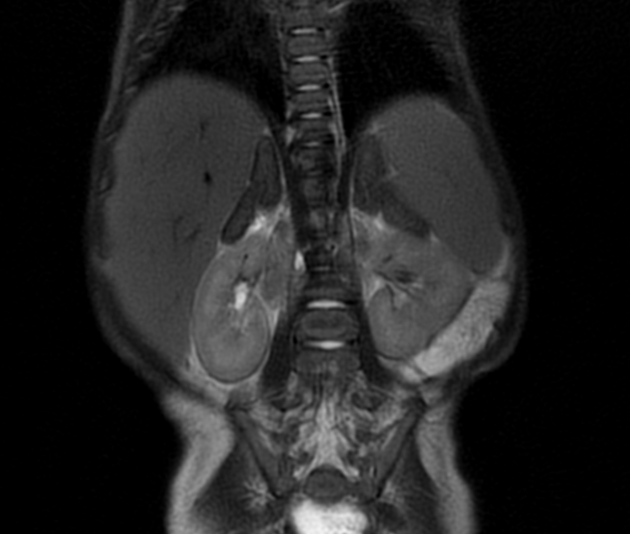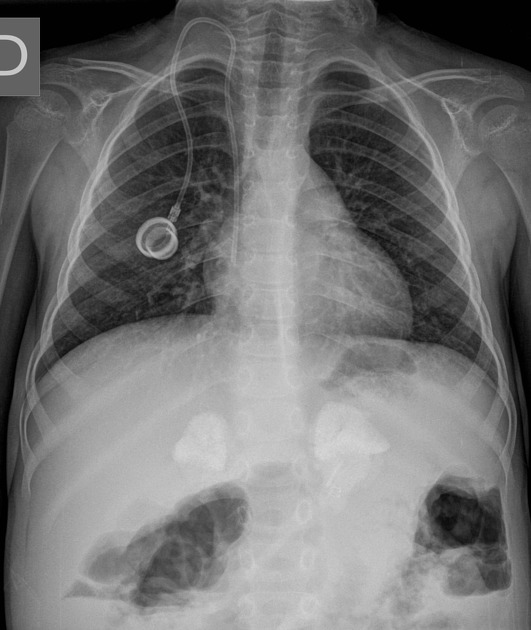Wolman disease is a rare autosomal recessive inborn error of metabolism resulting in the deposition of fats in multiple organs. This presents on imaging by hepatosplenomegaly and enlarged calcified adrenals.
On this page:
Clinical presentation
Patients with Wolman disease typically present during the first two months of life with failure to thrive, diarrhea and vomiting. Abdominal distention may be present because of hepatomegaly, splenomegaly and generalized lymphadenopathy 2.
Pathology
The underlying biochemical abnormality is a deficiency of lysosomal acid lipase, responsible for splitting triglycerides and cholesterol esters 3. The deficiency results in accumulation of lipid esters in multiple tissues including the liver, spleen, lymph nodes, and small bowel.
It likely represents the more severe end of a clinical spectrum of lysosomal acid lipase deficiency, with the milder version causing cholesteryl ester storage disease.
Marked accumulation of cholesterol and fatty acid crystals also occurs within the cells of the adrenal cortex, resulting in enlargement of the adrenal glands. Saponification (accumulation of glyceryl ether lipids) of this tissue with subsequent calcification results in the characteristic radiological features.
Radiographic features
Plain radiograph
bilateral calcification of the adrenal glands, which are enlarged 2,4
CT
may show hepatosplenomegaly (with steatotic liver)
bilaterally enlarged calcified (punctate calcification) adrenal glands that retain their normal triangular shapes
may show enlarged fatty-infiltrated lymph nodes
MRI
hepatosplenomegaly
bilateral adrenal enlargement
-
bilateral adrenal calcifications
T1: low signal foci
T2: low signal foci
Treatment and prognosis
Historically, treatment approaches have included total parenteral nutrition (TPN), corticosteroids, plasma infusion, and various dietary supplements, all without success, with death in infancy ensuing (usually within 6 months). Bone marrow transplantation has been reported with some success 6. Enzyme replacement therapy with sebelipase alfa has also increased survival and decreased morbidity 7.
History and etymology
It takes its name from Moshe Wolman (1914-2009) 5, an Israeli neuropathologist, who first described the entity in 1956.
Differential diagnosis
For adrenal calcification see: differential diagnosis for adrenal gland calcification








 Unable to process the form. Check for errors and try again.
Unable to process the form. Check for errors and try again.